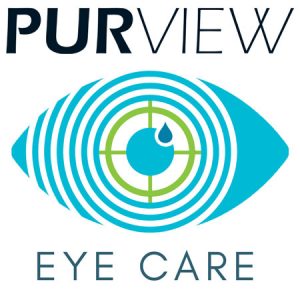Digital devices have impacted our world in so many positive ways, allowing us to connect, work, play, and get information at the speed of light. In fact, many people have a hard time when they “disconnect.” But all of this good brings with it a measure of concern: Digital Eye Strain or Computer Vision Syndrome.
Nearly 70 percent of U.S. adults experience digital eye strain as a result of the growing use of computers and digital devices. Adults aged 18 to 34 report feeling eye strain at a higher rate (45%) than their older counterparts. New research also suggests that overexposure to blue light, also referred to as high-energy visible or HEV light, may contribute to vision problems such as cataracts and age-related macular degeneration (AMD). Implications are just now being studied, but the short-term impact of digital eye strain affects individuals on a daily basis. Eye care providers are noting a steady rise in the incidence of myopia as well, which research suggests could be correlated to the increase of screen time and near focusing.
Symptoms of Digital Eye Strain include:
- Headaches
- Blurred or double vision
- Sore eyes
- Dry or watery eyes
- Sensitivity to light
- Neck, shoulder or back pain
In addition to these symptoms, emerging research shows that blue light from digital devices causes sleep disturbances by interfering with the REM cycle of sleep.
As people move from their computer to their tablet to their phone, more and more of these symptoms are being seen, and in younger and younger people. Computer glasses offer a solution to reduce the strain on your eyes and your exposure to blue light radiation.
How Computer Glasses Work
Computer glasses reduce eye strain by adjusting the focus slightly so that your eyes feel like they are focusing on something further away. They also have a tint to remove the glare and block blue light from entering into your eyes.
Finding the Right Pair
There are a number of companies that make computer glasses, some that are designed for device users without a prescription or that would wear the glasses with contact lenses. Other manufacturers provide options to incorporate vision prescriptions into the lens.
When shopping for computer glasses you want to make sure you find the right pair. The eyewear should sit nicely on your face and provide a comfortable tint. Here are some of the options available:
- Single Vision Computer Glasses: Provide the optimum lens power and field of view for viewing your computer screen without straining or leaning in to reduce symptoms of CVS. These are ideal for when the computer is at a fixed working distance, and work well if the user needs to view multiple screens at the same working distance.
- Office Lenses or Progressive Lenses: No-line multifocal eyewear that can be made to correct near, intermediate and some distance vision with a larger intermediate zone for computer vision if indicated. Perfect for those with presbyopia which is the gradual loss of focusing ability that occurs naturally with age. Office lenses work like progressive lenses but provide a wider field of view for intermediate (1-3 m) viewing distance and near working distance (about 40 cm).
- Blue-Blocking Lenses: Definitely recommended for this electronic age, blue-blocking lenses block blue light emitted from computer screens that is associated with glare, eye strain and possible sleep disturbances.
- Anti-glare and filtering coatings (treatments): Eliminate reflections from the surfaces of your lens to reduce eye strain and discomfort from glare. Some coatings can also block blue light emitted from computer screens.
While all of these are good options for protecting your eyes, the 20/20/20 rule still applies – after every 20 minutes of near tasks, look at something beyond 20 feet away for at least 20 seconds…it’s a good time to stretch the rest of the body too.
Eye exams are important to test your focusing ability, and to ensure that both eyes are working and focusing at the same place. Many people do not have the same prescription in each eye.
Children and Computer Glasses
Children are using digital devices more than ever and this trend will only continue as smartphones take over and tablet and computer-based learning increases. Their use extends well beyond the school day , as they use computers for homework and gaming and smartphones to text with their friends.
Computer glasses should be used for children proactively before eye strain begins to keep their eyes healthy longer and prevent nearsightedness.

In case of emergency, please phone our office at the number listed above. After hours, please visit your nearest emergency room.